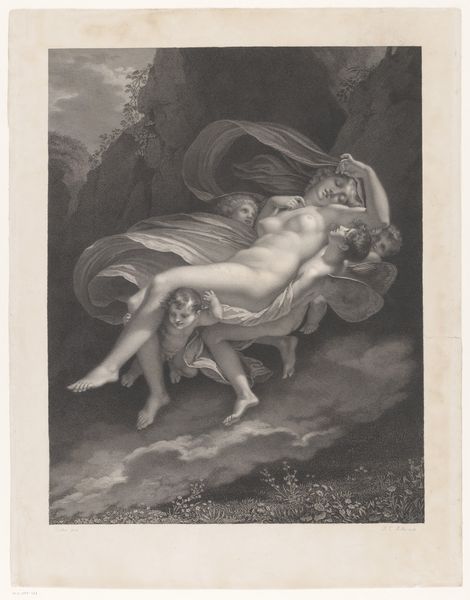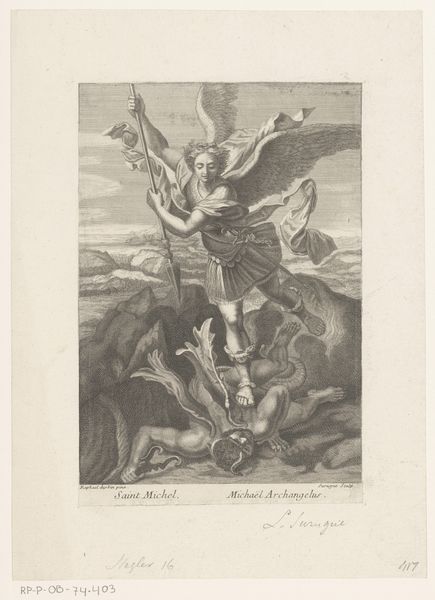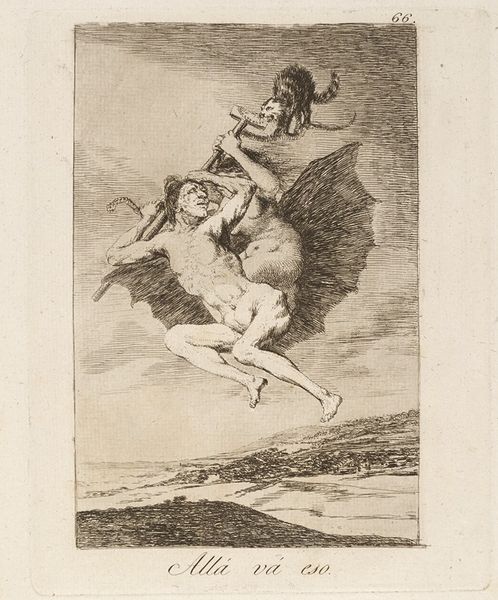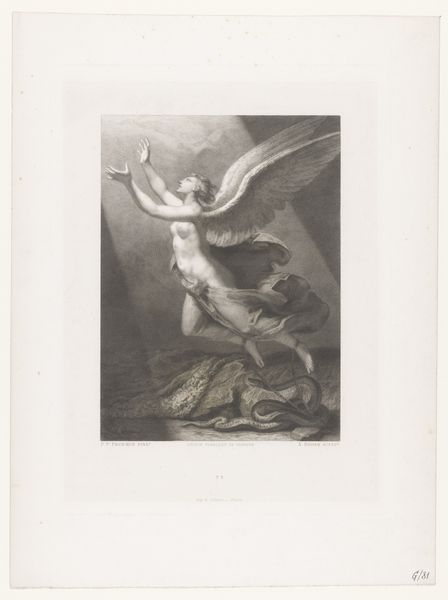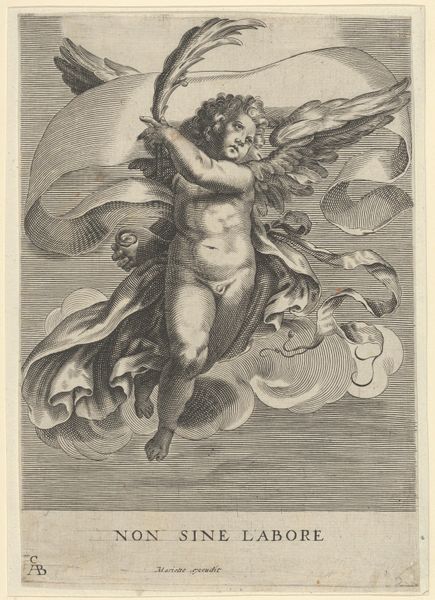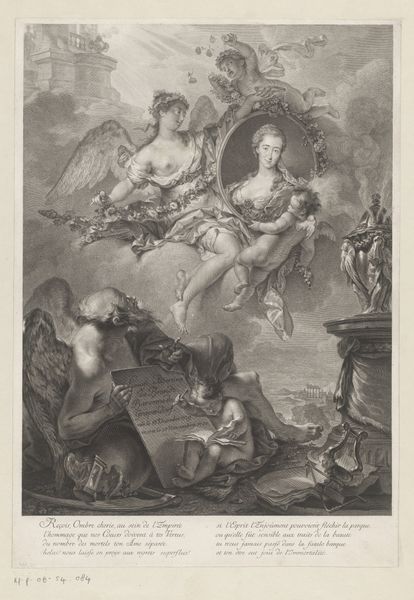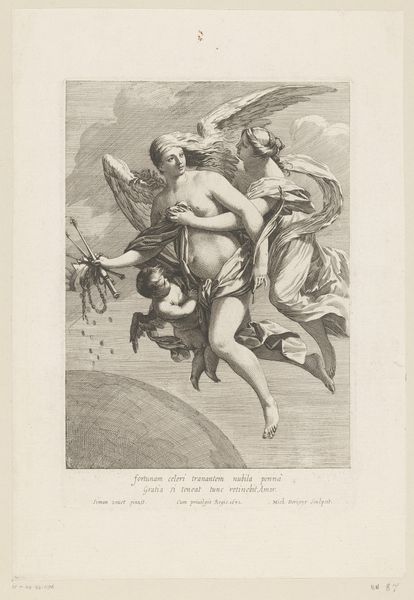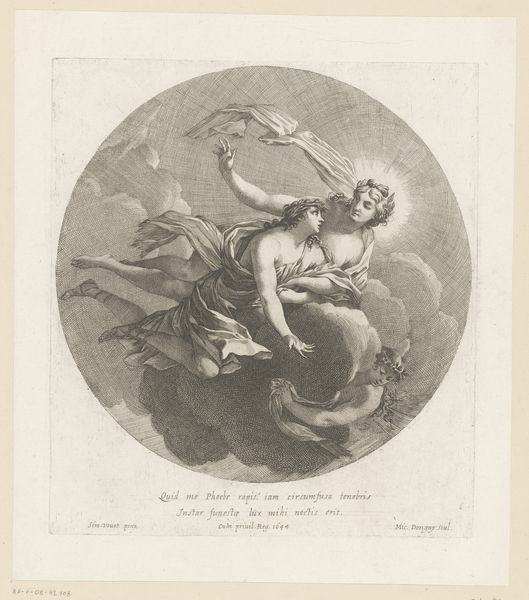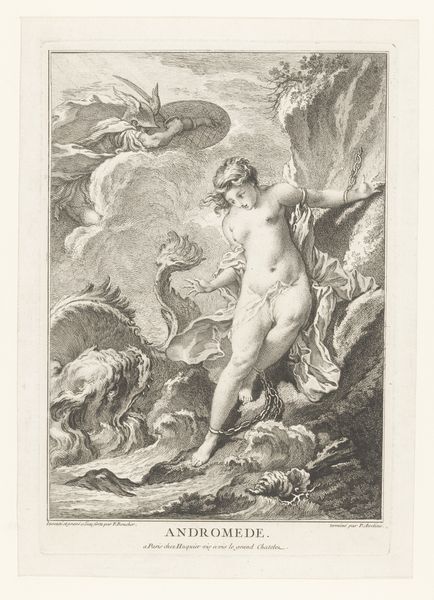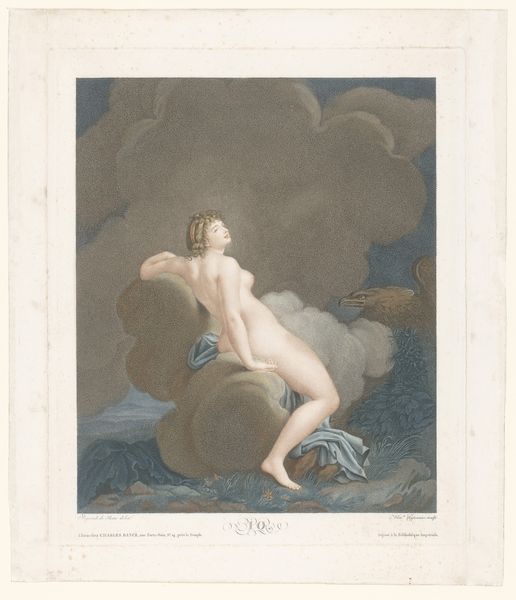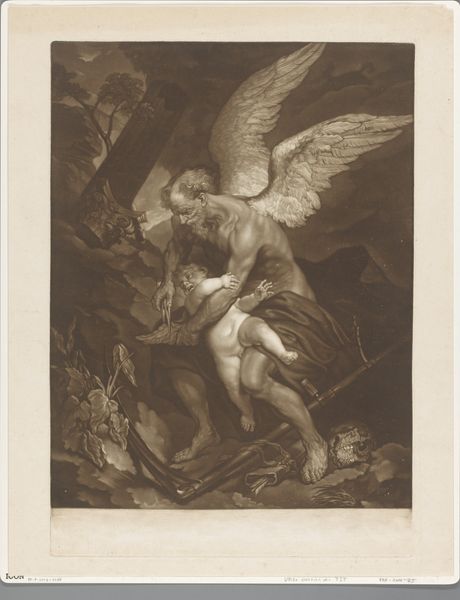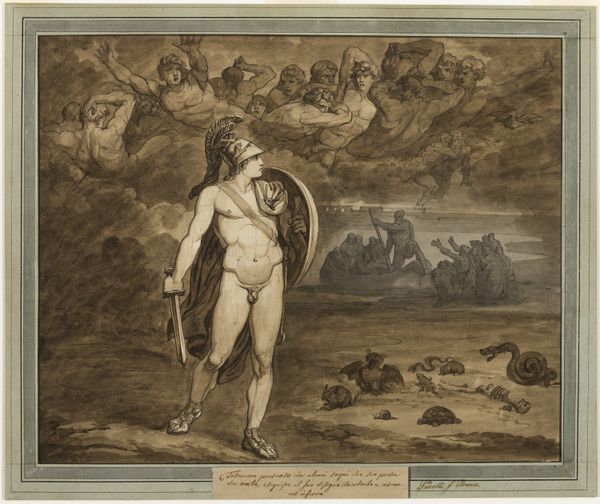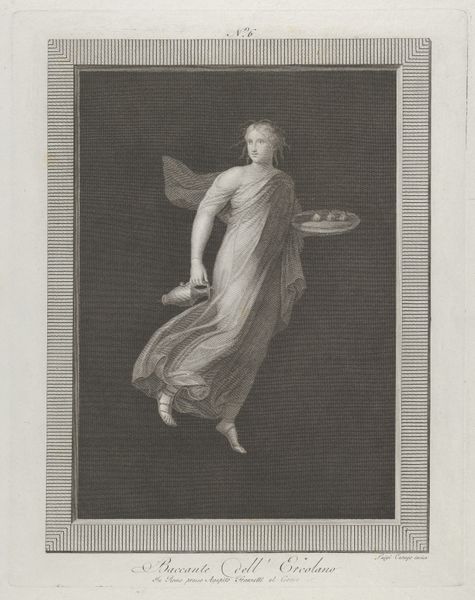
print, engraving
#
allegory
# print
#
figuration
#
pencil drawing
#
romanticism
#
watercolour illustration
#
nude
#
engraving
Dimensions: height 310 mm, width 235 mm
Copyright: Rijks Museum: Open Domain
Editor: We’re looking at Julien-Léopold Boilly's "Verlossing van de ziel," from 1847. It appears to be an engraving. There's this incredible contrast between the darkness at the bottom and the light above, with a winged figure reaching upwards. It feels like a visual poem. What do you make of it? Curator: Visual poem is spot on! For me, the real punch comes from the allegory. You've got this almost-nude figure escaping, or being redeemed, from the clutches of a serpent in a dark, watery landscape – primal fear, right? – while simultaneously reaching for this divine light. It's heavy on symbolism, like, what does redemption even mean? What does it cost? Boilly’s not just showing us pretty pictures, he’s asking questions. Are we even seeing wings, or are they wisps of a memory we are desperately trying to cling to? Editor: So, it's less about literal liberation and more about internal struggle? Curator: Precisely! And I wonder if Boilly felt a bit snake-bitten himself when he made this. I mean, the date, 1847 – Europe was a powder keg ready to explode. Artists feel all that. How can that tension *not* seep into your work when you're contemplating themes of freedom and constraint? It makes me wonder, how would you free yourself from such burden? What actions will allow you to rise, even momentarily? Editor: That context definitely adds another layer. It’s not just a figure rising to the light; it’s rising above historical circumstances too. Curator: Right? It's a heavy, but ultimately hopeful, sentiment in a beautifully rendered form. It almost makes you want to shout at her to “keep going”! Editor: I totally agree. Now I look at it completely differently.
Comments
No comments
Be the first to comment and join the conversation on the ultimate creative platform.
